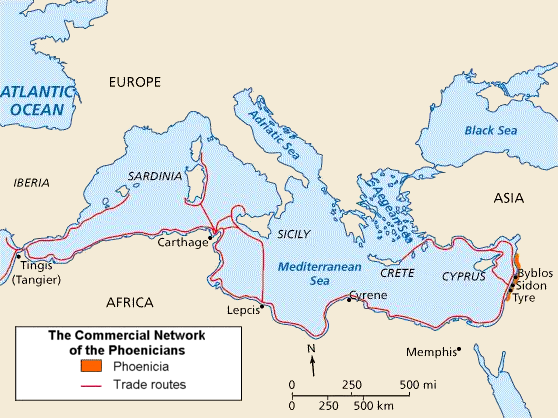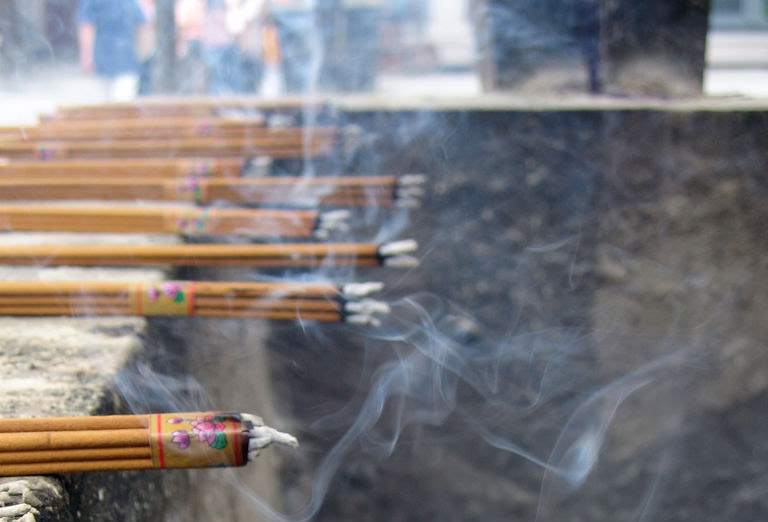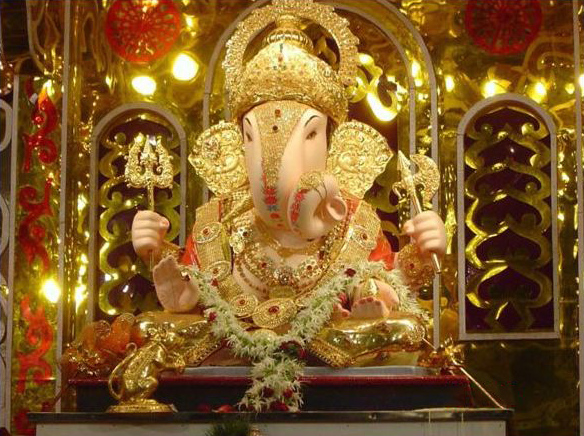|
Massa Candida
The Massa Candida were 153 or 300 early Christian martyrs from Utica who were martyred for their refusal to offering incense to Roman idols, around AD 258. They were put to death by Galerius Maximus Galerius Maximus was a Roman senator, who was active during the mid third century. He was suffect consul for an undetermined '' nundinium'' in the early 240s. Galerius Maximus is best known as the proconsul of Roman Africa who condemned Bishop Cypr ..., the governor of the province of Africa. The title "Massa Candida" or "White Mass or Lump" refers to their manner of death. The ''Catholic Encyclopedia'' reports that they were hurled into a pit of burning lime and thus reduced to a mass of white powder. They are commemorated on 24 August. References 3rd-century Christian martyrs Year of birth unknown {{saint-stub ... [...More Info...] [...Related Items...] OR: [Wikipedia] [Google] [Baidu] |
Galerius Maximus
Galerius Maximus was a Roman senator, who was active during the mid third century. He was suffect consul for an undetermined '' nundinium'' in the early 240s. Galerius Maximus is best known as the proconsul of Roman Africa who condemned Bishop Cyprian to death for not obeying the dictates of emperors Valerian and Gallienus and refusing to make public sacrifices.''Acta proconsularia'', iii.3; English translation in W.H.C. Frend, ''A New Eusebius: Documents illustrating the history of the Church to AD 337'', revised edition (London: SPCK, 1987), pp. 247-250 He also condemned the Massa Candida, a group of 153 or 300 Christians to death by burning for their refusal to offer incense Incense is an aromatic biotic material that releases fragrant smoke when burnt. The term is used for either the material or the aroma. Incense is used for aesthetic reasons, religious worship, aromatherapy, meditation, and ceremonial reasons. It ... to the Roman gods. References 3rd-century Romans ... [...More Info...] [...Related Items...] OR: [Wikipedia] [Google] [Baidu] |
Death By Burning
Death by burning is an execution, murder, or suicide method involving combustion or exposure to extreme heat. It has a long history as a form of public capital punishment, and many societies have employed it as a punishment for and warning against crimes such as treason, heresy, and witchcraft. The best-known execution of this type is burning at the stake, where the condemned is bound to a large wooden stake and a fire lit beneath. A holocaust is a religious animal sacrifice that is completely consumed by fire, also known as a burnt offering. The word derives from the ancient Greek holokaustos, the form of sacrifice in which the victim was reduced to ash, as distinguished from an animal sacrifice that resulted in a communal meal. Effects In the process of being burned to death, a body experiences burns to tissue, changes in content and distribution of body fluid, fixation of tissue, and shrinkage (especially of the skin). Internal organs may be shrunken due to fluid loss. Shr ... [...More Info...] [...Related Items...] OR: [Wikipedia] [Google] [Baidu] |
Eastern Orthodox Church
The Eastern Orthodox Church, officially the Orthodox Catholic Church, and also called the Greek Orthodox Church or simply the Orthodox Church, is List of Christian denominations by number of members, one of the three major doctrinal and jurisdictional groups of Christianity, with approximately 230 million baptised members. It operates as a Communion (Christian), communion of autocephalous churches, each governed by its Bishop (Orthodox Church), bishops via local Holy Synod, synods. The church has no central doctrinal or governmental authority analogous to the pope of the Catholic Church. Nevertheless, the Ecumenical Patriarch of Constantinople is recognised by them as ''primus inter pares'' (), a title held by the patriarch of Rome prior to 1054. As one of the oldest surviving religious institutions in the world, the Eastern Orthodox Church has played an especially prominent role in the history and culture of Eastern Europe, Eastern and Southeastern Europe. Since 2018, the ... [...More Info...] [...Related Items...] OR: [Wikipedia] [Google] [Baidu] |
Roman Catholic Church
The Catholic Church (), also known as the Roman Catholic Church, is the List of Christian denominations by number of members, largest Christian church, with 1.27 to 1.41 billion baptized Catholics Catholic Church by country, worldwide as of 2025. It is among the world's oldest and largest international institutions and has played a prominent role in the history and development of Western civilization.Gerald O'Collins, O'Collins, p. v (preface). The church consists of 24 Catholic particular churches and liturgical rites#Churches, ''sui iuris'' (autonomous) churches, including the Latin Church and 23 Eastern Catholic Churches, which comprise almost 3,500 dioceses and Eparchy, eparchies List of Catholic dioceses (structured view), around the world, each overseen by one or more Bishops in the Catholic Church, bishops. The pope, who is the bishop of Rome, is the Papal supremacy, chief pastor of the church. The core beliefs of Catholicism are found in the Nicene Creed. The ... [...More Info...] [...Related Items...] OR: [Wikipedia] [Google] [Baidu] |
Christian Martyrs
In Christianity, a martyr is a person who was killed for their testimony for Jesus or faith in Jesus. In the years of the early church, stories depict this often occurring through death by sawing, stoning, crucifixion, burning at the stake, or other forms of torture and capital punishment. The word ''martyr'' comes from the Koine word μάρτυς, ''mártys'', which means "witness" or "testimony". At first, the term applied to the Apostles. Once Christians started to undergo persecution, the term came to be applied to those who suffered hardships for their faith. Finally, it was restricted to those who had been killed for their faith. The early Christian period before Constantine I was the "Age of Martyrs". "Early Christians venerated martyrs as powerful intercessors, and their utterances were treasured as inspired by the Holy Spirit." In western Christian art, martyrs are often shown holding a palm frond as an attribute, representing the victory of spirit over flesh, and ... [...More Info...] [...Related Items...] OR: [Wikipedia] [Google] [Baidu] |
Utica, Tunisia
Utica () was an ancient Phoenician and Carthaginian city located near the outflow of the Medjerda River into the Mediterranean, between Carthage in the south and Hippo Diarrhytus (present-day Bizerte) in the north. It is traditionally considered to be the first colony to have been founded by the Phoenicians in North Africa. After Carthage's loss to Rome in the Punic Wars, Utica was an important Roman colony for seven centuries. Utica no longer exists, and its remains are located in Bizerte Governorate in Tunisia – not on the coast where it once lay, but further inland because of deforestation and agriculture upriver as the Medjerda River silted over its original mouth."Utica (Utique) Tunisia" ''The Princeton Encyclopedia of Classical Sites. Stillwell'', Richard, Macdo ... [...More Info...] [...Related Items...] OR: [Wikipedia] [Google] [Baidu] |
Incense
Incense is an aromatic biotic material that releases fragrant smoke when burnt. The term is used for either the material or the aroma. Incense is used for aesthetic reasons, religious worship, aromatherapy, meditation, and ceremonial reasons. It may also be used as a simple deodorant or insect repellent. Incense is composed of aromatic plant materials, often combined with essential oils. The forms taken by incense differ with the underlying culture, and have changed with advances in technology and increasing number of uses. Incense can generally be separated into two main types: "indirect-burning" and "direct-burning." Indirect-burning incense (or "non-combustible incense") is not capable of burning on its own, and requires a separate heat source. Direct-burning incense (or "combustible incense") is lit directly by a flame and then fanned or blown out, leaving a glowing ember that smoulders and releases a smoky fragrance. Direct-burning incense is either a paste formed around a ... [...More Info...] [...Related Items...] OR: [Wikipedia] [Google] [Baidu] |
Cult Image
In the practice of religion, a cult image is a Cultural artifact, human-made object that is venerated or worshipped for the deity, Spirit (supernatural entity), spirit or Daimon, daemon that it embodies or represents. In several traditions, including the ancient religions of Ancient Egypt, Egypt, Ancient Greece, Greece and Rome, and Hinduism, cult images in a temple may undergo a daily routine of being washed, dressed, and having food left for them. Processions outside the temple on special feast days are often a feature. Religious images cover a wider range of all types of images made with a religious purpose, subject, or connection. In many contexts "cult image" specifically means the most important image in a temple, kept in an inner space, as opposed to what may be many other images decorating the temple. The term idol is an image or representation of a god used as an object of worship, while idolatry is the worship of an "idol" as though it were God. Ancient Near East and E ... [...More Info...] [...Related Items...] OR: [Wikipedia] [Google] [Baidu] |
Province Of Africa
Africa was a Roman province on the northern coast of the continent of Africa. It was established in 146 BC, following the Roman Republic's conquest of Carthage in the Third Punic War. It roughly comprised the territory of present-day Tunisia, the northeast of Algeria, and the coast of western Libya along the Gulf of Sidra. The territory was originally and still is inhabited by Berbers, known in Latin as the Numidae and Maurii'','' indigenous to all of North Africa west of Egypt. In the 9th century BC, Semitic-speaking Phoenicians from the Levant built coastal settlements across the Mediterranean to support and expand their shipping networks. In the 8th century BC, the settlement of Carthage became the predominant Phoenician colony. Rome began expanding into the Province of Africa after annexing Carthage in 146 BC at the end of the Punic Wars, and later into Numidia in 25 BC, establishing Roman colonies in the region. Africa was one of the wealthiest provinces i ... [...More Info...] [...Related Items...] OR: [Wikipedia] [Google] [Baidu] |
Lime (material)
Lime is an Inorganic compound, inorganic material composed primarily of calcium oxides and hydroxides. It is also the name for calcium oxide which is used as an industrial mineral and is made by heating calcium carbonate in a kiln. Calcium oxide can occur as a product of coal-seam fires and in altered limestone xenoliths in volcanic ejecta. The International Mineralogical Association recognizes lime as a mineral with the chemical formula of CaO. The word ''lime'' originates with its earliest use as building mortar and has the sense of ''sticking or adhering''. These materials are still used in large quantities in the manufacture of steel and as building and engineering materials (including limestone products, cement, concrete, and mortar (masonry), mortar), as chemical feedstocks, for sugar refining, and other uses. Lime industries and the use of many of the resulting products date from prehistoric times in both the Old World and the New World. Lime is used extensively for was ... [...More Info...] [...Related Items...] OR: [Wikipedia] [Google] [Baidu] |
3rd-century Christian Martyrs
The 3rd century was the period from AD 201 (represented by the Roman numerals CCI) to AD 300 (CCC) in accordance with the Julian calendar. In this century, the Roman Empire saw a crisis, starting with the assassination of the Roman Emperor Severus Alexander in 235, plunging the empire into a period of economic troubles, barbarian incursions, political upheavals, civil wars, and the split of the Roman Empire through the Gallic Empire in the west and the Palmyrene Empire in the east, which all together threatened to destroy the Roman Empire in its entirety, but the reconquests of the seceded territories by Emperor Aurelian and the stabilization period under Emperor Diocletian due to the administrative strengthening of the empire caused an end to the crisis by 284. This crisis would also mark the beginning of Late Antiquity. While in North Africa, Roman rule continued with growing Christian influence, particularly in the region of Carthage. In Persia, the Parthian Empire was suc ... [...More Info...] [...Related Items...] OR: [Wikipedia] [Google] [Baidu] |







